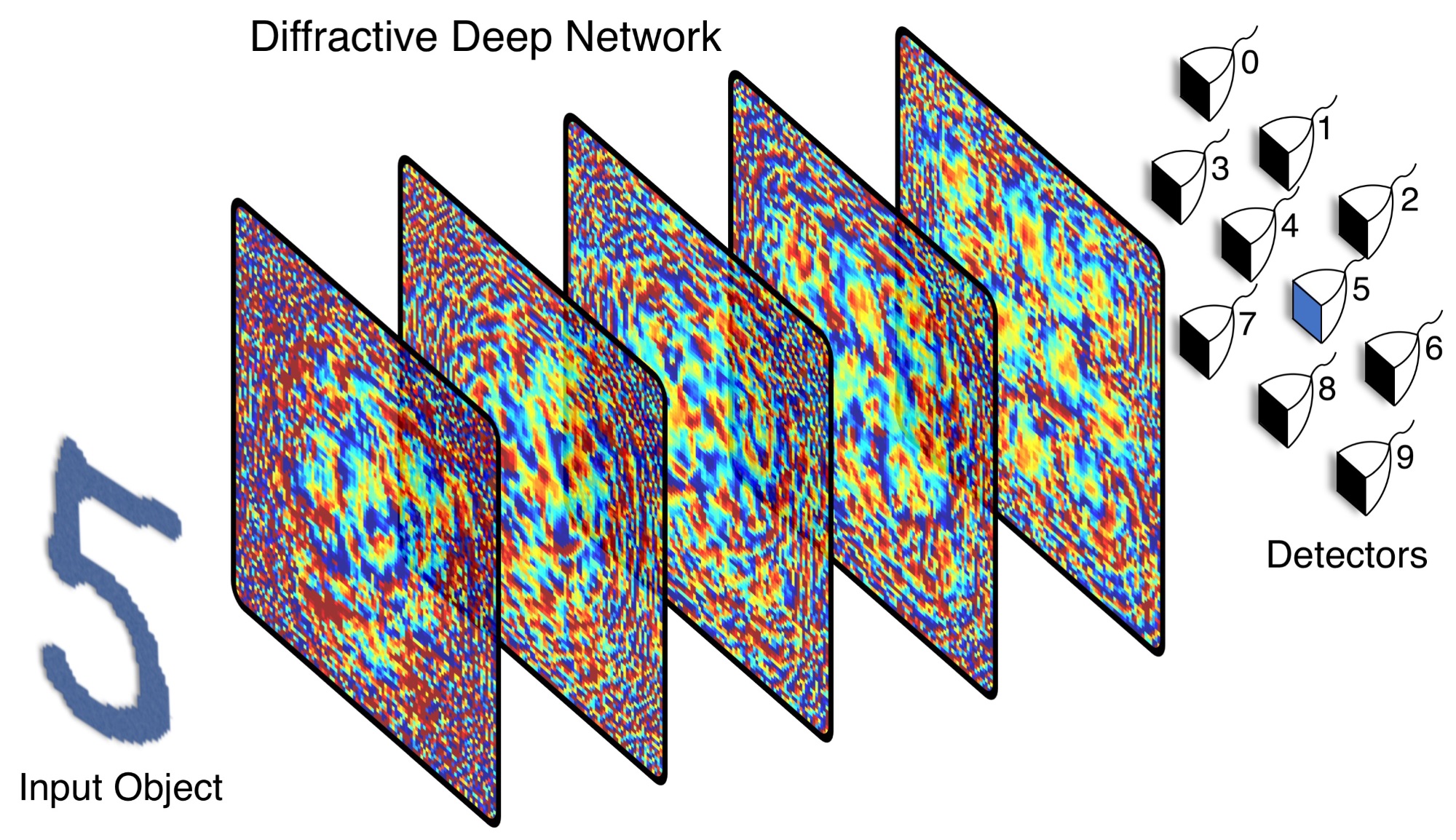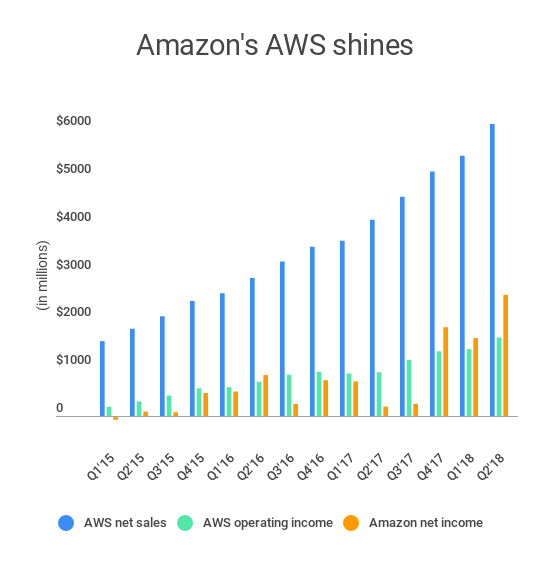Music
Trailers
DailyVideos
India
Pakistan
Afghanistan
Bangladesh
Srilanka
Nepal
Thailand
StockMarket
Business
Technology
Startup
Trending Videos
Coupons
Football
Search
Download App in Playstore
Download App
Best Collections
Technology
When we called the ACLUAmazonRekognition press release an &attention-grabbing stunt& when we wrote about it earlier today, well, consider that attention grabbed. Several Democratic members of Congress have responded with a strongly worded letter to founder Jeff Bezos.
Reps. Jimmy Gomezand John Lewis issued a letter to Bezos, after the ACLU noted that the facial recognition software falsely associated 28 images of Congress members with mugshots in a criminal database. Lewis, a pivotal figure in Americacivil rights moment, was among those falsely matched in the ACLUtesting — particularly notable as the testing appeared to have a particular bias against people of color.
&The results of the ACLUtest of Amazon‘Rekognition& software are deeply troubling,& Lewis wrote in a statement. &As a society, we need technology to help resolve human problems, not to add to the mountain of injustices presently facing people of color in this country. Black and brown people are already unjustly targeted through a discriminatory sentencing system that has led to mass incarceration and devastated millions of families.&

A trio of Congress members (Sen. Ed Markey and Reps. Luis Gutiérrez and Mark DeSaulnier), meanwhile, wrote a letter addressed to Bezos with a series of questions about the technology:
While facial recognition services might provide a valuable law enforcement tool, the efficacy and impact of the technology are not yet fully understood. In particular, serious concerns have been raised about the dangers facial recognition can pose to privacy and civil rights, especially when it is used as a tool of government surveillance, as well as the accuracy of the technology and its disproportionate impact on communities of color.
Amazon for its part, both defended Rekognition and disputed the ACLUmethods. &We remain excited about how image and video analysis can be a driver for good in the world, including in the public sector and law enforcement,& the company wrote in a statement provided to TechCrunch.
With regard to testing, it says:
[W]e think that the results could probably be improved by following best practices around setting the confidence thresholds (this is the percentage likelihood that Rekognition found a match) used in the test. While 80% confidence is an acceptable threshold for photos of hot dogs, chairs, animals, or other social media use cases, it wouldn&t be appropriate for identifying individuals with a reasonable level of certainty. When using facial recognition for law enforcement activities, we guide customers to set a threshold of at least 95% or higher.
The company also reiterated an earlier statement that the results are intended to be used to narrow down results, rather than lead directly to arrests.
Regardless, the ACLUstunt certainly got the attention the organization was seeking, both with regard to the aforementioned biases and broader security implications of facial scanning for law enforcement.
- Details
- Category: Technology
Read more: Congress members demand answers from Amazon about facial recognition software
Write comment (93 Comments)On Thursday, the Pentagon opened bidding for a substantial cloud computing agreement that could be worth as much as $10 billion. Given its size, the Joint Enterprise Defense Infrastructure agreement, referred to as JEDI, is alluring for significant cloud computing business that may not normally do much service with the Department of Defense. Announced in March, JEDI is structured as a winner-take-all contract with a prospective 10-year term, though the Pentagon clarified that the initial award will cover just the very first two years, so all 10 years aren & t set in stone in advance. While itnot yet stimulated the exact same level of protest as GoogleAI contract with the Pentagon known as Project Maven, JEDI isn & t uncontroversial. The now notorious Project Maven was a smaller, more specific contract with direct ramifications for the militaryuse of drones, while JEDI is broader and bigger, looking for a supplier to offer cloud services for all branches of the armed force. Google has considering that deserted strategies to restore the agreement, but Maven was likely a sort of trial run for the business in the lead-up to JEDI. While Amazon is mostly considered the most likely winner, Google, Microsoft, IBM and Oracle are likewise amongst the significant tech companies anticipated to throw their hats into the ring. Earlier while doing so, it looked possible that companies could unite to form unlikely alliances against the perceived frontrunner, though it appears in the final request for proposition that the Pentagon strategies to award the contract to a single company efficient in managing it. Interested parties will have till September 17 to send propositions, so in the months to come we can definitely anticipate to hear more from companies in the running and employees who oppose JEDI involvement.
- Details
- Category: Technology
Read more: Tech companies can bid on the Pentagon's $10 billion cloud agreement, starting today
Write comment (92 Comments)If you missed out on the very first couple of rounds of excitement about Nintendomini nostalgia machines, you & ve got another chance at paying a regular rate. Nintendo NES and SNES Classic consoles aren & t always simple to discover, however they & re now available from Amazon for $59.99 (NES Classic) and $79.99 (SNES Classic). You can put an order for either right now, though know that the NES Classic won & t ship till itback in stock on August 12 and the SNES Classic looks like it & ll be back on August 3 —-- a quite reasonable await a sure thing. Update: It appears like Amazon stock of the NES Classic may have already gone out in the course of the last few minutes, though the SNES version is still available at its regular market price of $79.99 (and letbe real, it was the very best console). They seem to be dropping in and out of schedule, so try refreshing! When they were initially presented, the reimagined versions of two of the best-loved consoles of all-time shown up to feverish need. Back in 2016, the NES Classic was tough to hunt down, and when it struck in August 2017, the SNES followed suit, handling to even outpace interest in its own progenitor. (Naturally, scarcity is the ideal fuel for a nostalgia-powered fire.). Nintendo originally didn & t plan for either console to be restocked indefinitely, but after observing the & unbridled interest & of the retro gaming boxes it chose to keep them around. The consoles reappeared in May and June but sold out rapidly. Even with the repeat looks, itbeen tough to keep an eye on when and where the important things go on sale. If you & re reading this and you & ve yet to score a one-way ticket to nostalgic 8- or 16-bit euphoria, the Amazon listings appear like a sure bet —-- for the moment, anyhow.
- Details
- Category: Technology
Read more: You can buy the NES Classic and SNES Classic on Amazon now
Write comment (93 Comments)With todayannouncement from Atlassian that it was offering to Slack the IP assets of its two enterprise communications tools, HipChat and Stride, it closes the book on among the earliest rivals in the contemporary business chat space. It likewise was a clear signal that Slack is not afraid to handle its huge rivals by forming essential alliances. That the statement came from Slack co-founder and CEO Stewart Butterfield on Twitter just exacerbated that truth. Atlassian has a set of popular developer tools like Jira, Confluence and Bitbucket. At this moment, HipChat and Stride had actually really become unneeded to the company and they offered the IP to their competitor. Not just is Slack buying the assets and Atlassian is successfully shutting down these items, Atlassian is likewise investing in Slack, a relocation that reveals itthrowing its monetary weight behind the company, as well, and forming an alliance with them. Slack has actually been burning it up considering that in released in 2014 with simply 16,000 day-to-day active users. At last count, in May, the business was reporting 8 million active users, 3 million of which were paid. Thatup from 6 million DAUs and 2 million paid users in September 2017. At the time, the company was reporting $200 million in yearly recurring revenue. Ita fair bet with the number of paid users growing by one-third at last count, that income number has actually increased considerably. Slack and items of its ilk like Workplace by Facebook, Google Hangouts and Microsoft Teams are attempting to change the way we communicate and team up inside companies. Slack has handled to advance the idea of enterprise interactions that started in the early 2000s with chat clients, advanced to Enterprise 2.0 tools like Yammer and Jive in the mid-2000s and lastly developed into modern tools like Slack we are utilizing today in the mobile-cloud era. Slack has been able to be successful so well in service due to the fact that it does much more than offer a channel to communicate. It has actually constructed a platform on top of which companies can plug in a variety of tools they are using every day to do their tasks, like ServiceNow for assistance desk tickets, Salesforce for CRM and marketing data and Zendesk for customer support info. This capability to supply an easy way to do all of your business in one location without a great deal of task changing has actually been a Holy Grail of sorts in the business for years. The 2 formerly pointed out models, chat clients and Enterprise 2.0 tools, attempted and failed to accomplish this, however Slack has actually handled to develop this single platform and made it easy for business to incorporate services. This has actually been automated even further by the usage of bots, which can function as relied on assistants within Slack, providing additional info and performing jobs for you in your place when it makes sense. Slack has an otherworldly appraisal of more than $5 billion right now, and is on its method to an eventual IPO. Atlassian may have thrown in the towel on enterprise communications, however it has opened the door to getting a piece of that IPO action while offering its customers what they desire and forming a strong bond with Slack. Others like Facebook and Microsoft also have a strong presence in this space and continue to construct out their items. Itnot as though anyone else is revealing signs of tossing up their hands right now. In truth, just todayFacebook bought Redkix to enhance its offering by providing users the capability to work together via email or the Workplace by Facebook user interface, but Atlassianacquiescence is a strong signal that if you had any doubt, Slack is a leader here —-- and they got a huge boost with todayannouncement.
- Details
- Category: Technology
Read more: Slack types crucial alliance as Atlassian throws in the towel on enterprise chat
Write comment (97 Comments)Machine learning is everywhere these days, but itusually more or less invisible: it sits in the background, optimizing audio or picking out faces in images. But this new system is not only visible, but physical: it performs AI-type analysis not by crunching numbers, but by bending light. Itweird and unique, but counter-intuitively, itan excellent demonstration of how deceptively simple these &artificial intelligence& systems are.
Machine learning systems, which we frequently refer to as a form of artificial intelligence, at their heart are just a series of calculations made on a set of data, each building on the last or feeding back into a loop. The calculations themselves aren&t particularly complex — though they aren&t the kind of math you&d want to do with a pen and paper. Ultimately all that simple math produces a probability that the data going in is a match for various patterns it has &learned& to recognize.
The thing is, though, that once these &layers& have been &trained& and the math finalized, in many ways itperforming the same calculations over and over again. Usually that just means it can be optimized and won&t take up that much space or CPU power. But researchers from UCLA show that it can literally be solidified, the layers themselves actual 3D-printed layers of transparent material, imprinted with complex diffraction patterns that do to light going through them what the math would have done to numbers.
 If thata bit much to wrap your head around, think of a mechanical calculator. Nowadays itall done digitally in computer logic, but back in the day calculators used actual mechanical pieces moving around — something adding up to 10 would literally cause some piece to move to a new position. In a way this &diffractive deep neural network& is a lot like that: it uses and manipulates physical representations of numbers rather than electronic ones.
If thata bit much to wrap your head around, think of a mechanical calculator. Nowadays itall done digitally in computer logic, but back in the day calculators used actual mechanical pieces moving around — something adding up to 10 would literally cause some piece to move to a new position. In a way this &diffractive deep neural network& is a lot like that: it uses and manipulates physical representations of numbers rather than electronic ones.
As the researchers put it:
Each point on a given layer either transmits or reflects an incoming wave, which represents an artificial neuron that is connected to other neurons of the following layers through optical diffraction. By altering the phase and amplitude, each &neuron& is tunable.
&Our all-optical deep learning framework can perform, at the speed of light, various complex functions that computer-based neural networks can implement,& write the researchers in the paper describing their system, published today in Science.
To demonstrate it they trained a deep learning model to recognize handwritten numerals. Once it was final, they took the layers of matrix math and converted it into a series of optical transformations. For example, a layer might add values together by refocusing the light from both onto a single area of the next layer — the real calculations are much more complex, but hopefully you get the idea.
 By arranging millions of these tiny transformations on the printed plates, the light that enters one end comes out the other structured in such a way that the system can tell whether ita 1, 2, 3 and so on with better than 90 percent accuracy.
By arranging millions of these tiny transformations on the printed plates, the light that enters one end comes out the other structured in such a way that the system can tell whether ita 1, 2, 3 and so on with better than 90 percent accuracy.
What use is that, you ask Well, none in its current form. But neural networks are extremely flexible tools, and it would be perfectly possible to have a system recognize letters instead of numbers, making an optical character recognition system work totally in hardware with almost no power or calculation required. And why not basic face or figure recognition, no CPU necessary How useful would that be to have in your camera
The real limitations here are manufacturing ones: itdifficult to create the diffractive plates with the level of precision required to perform some of the more demanding processing. After all, if you need to calculate something to the seventh decimal place, but the printed version is only accurate to the third, you&re going to run into trouble.
This is only a proof of concept — thereno dire need for giant number-recognition machines — but ita fascinating one. The idea could prove to be influential in camera and machine learning technology — structuring light and data in the physical world rather than the digital one. It may feel like itgoing backwards, but perhaps the pendulum is simply swinging back the other direction.
- Details
- Category: Technology
Read more: This 3D-printed AI construct analyzes by bending light
Write comment (97 Comments)Amazon web services AWS continue to be the highlight of the companybalance sheet, once again showing the kind of growth Amazon is looking for in a new business for the second quarter — especially one that has dramatically better margins than its core retail business.
Despite now running a grocery chain, the companyAWS division — which has an operating margin over 25 percent compared to its tiny margins on retail — grew 49 percent year-over-year in the quarter compared to last yearsecond quarter. Italso up 49 percent year-over-year when comparing the most recent six months to the same period last year. AWS is now on a run rate well north of $10 billion annually, generating more than $6 billion in revenue in the second quarter this year. Meanwhile, Amazonretail operations generated nearly $47 billion with a net income of just over $1.3 billion (unaudited). AmazonAWS generated $1.6 billion in operating income on its $6.1 billion in revenue.
So, in short, Amazondramatically more efficient AWS business is its biggest contributor to its actual net income. The company reported earnings of $5.07 per share, compared to analyst estimates of around $2.50 per share, on revenue of $52.9 billion. That revenue number fell under what investors were looking for, so the stock isn&t really doing anything in after-hours, and Amazon still remains in the race to become a company with a market cap of $1 trillion alongside Google, Apple and Microsoft.

This isn&t extremely surprising, as Amazon was one of the original harbingers of the move to a cloud computing-focused world, and, as a result, Microsoft and Google are now chasing it to capture up as much share as possible. While Microsoft doesn&t break out Azure, the company says itone of its fastest-growing businesses, and Google&other revenue& segment that includes Google Cloud Platform also continues to be one of its fastest-growing divisions. Running a bunch of servers with access to on-demand compute, it turns out, is a pretty efficient business that can account for the very slim margins that Amazon has on the rest of its core business.
- Details
- Category: Technology
Read more: Amazon's AWS continues to lead its performance highlights
Write comment (97 Comments)Page 4615 of 5614

 10
10




